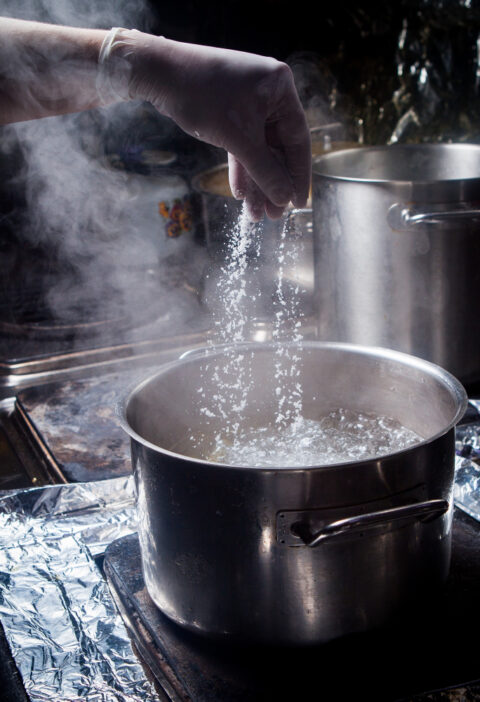Explanation:
Plating and presentation are crucial aspects of culinary arts that enhance the dining experience by making food visually appealing. Well-presented dishes can stimulate appetite and make a lasting impression. Here are some key principles and techniques for effective plating and presentation:
- Balance:
- Colors: Use a variety of colors to make the dish visually interesting. Fresh herbs, vegetables, and garnishes can add vibrant hues.
- Textures: Combine different textures to create contrast. Mix crunchy, smooth, soft, and crispy elements to keep the diner engaged.
- Shapes and Sizes: Vary the shapes and sizes of the components on the plate. Use different cutting techniques and presentation styles to add visual interest.
- Portion Control:
- Proportion: Ensure that the portion size is appropriate for the meal and the plate. Avoid overcrowding the plate or leaving too much empty space.
- Focal Point: Highlight the main ingredient by placing it in the center or giving it prominence. Arrange other elements around it to draw attention.
- Arrangement:
- Rule of Thirds: Use the rule of thirds to create a balanced and aesthetically pleasing composition. Divide the plate into thirds and place key elements along these lines or intersections.
- Clock Method: Visualize the plate as a clock face. Place the main protein at 6 o’clock, starch or grains at 2 o’clock, and vegetables at 10 o’clock.
- Height and Layers:
- Build Height: Adding height to the dish can make it look more dynamic. Stack ingredients or use garnishes to create vertical layers.
- Layering: Layer ingredients to add depth. For example, place a bed of grains or vegetables beneath the main protein.
- Garnishing:
- Edible Garnishes: Use garnishes that complement the flavors of the dish. Fresh herbs, microgreens, edible flowers, and citrus zest can add a finishing touch.
- Less is More: Avoid over-garnishing. A few well-placed garnishes can enhance the dish without overwhelming it.
- Sauce Presentation:
- Drizzle and Dot: Use a squeeze bottle or spoon to drizzle sauces artistically or create small dots for a modern look.
- Smears: Use the back of a spoon to smear sauce across the plate for a stylish effect.
- Cleanliness:
- Wipe the Edges: Keep the edges of the plate clean to maintain a professional appearance. Use a damp cloth or paper towel to wipe away any spills or smudges.
- Precision: Place ingredients and garnishes carefully to avoid messiness. Precision adds to the overall elegance of the presentation.
- Plating Temperature:
- Hot and Cold Plates: Use warm plates for hot dishes and chilled plates for cold dishes to maintain the optimal serving temperature.
- Timing: Plate the food just before serving to ensure it remains at the right temperature and maintains its texture.
- Personal Style:
- Signature Touch: Develop your unique plating style. Experiment with different techniques and presentations to create a signature look that represents your culinary vision.
- Inspiration: Draw inspiration from art, nature, and other chefs. Incorporate elements that resonate with your personal aesthetic.
By mastering these principles and techniques, you can elevate the presentation of your dishes, making them not only delicious but also visually stunning. This attention to detail can enhance the dining experience and leave a memorable impression on your guests.



